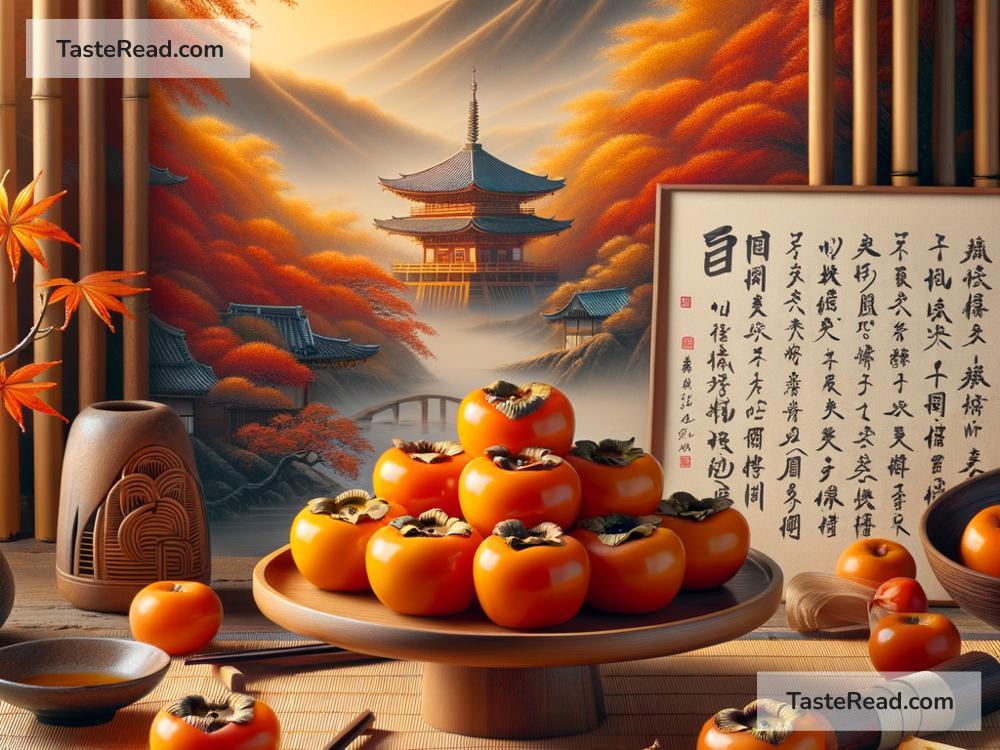The Fascinating History of Persimmons in Japanese Culture
Persimmons, or “kaki” in Japanese, are not just fruits in Japan—they are symbols of tradition, resilience, and natural beauty. This beloved fruit, with its sweet flavor and vibrant orange color, has deep roots in Japanese history and culture. It has inspired poetry, art, and even ancient wisdom for centuries. Let’s take a journey through the fascinating history of persimmons in Japan and discover why they hold such importance in Japanese life.
The Origins of Persimmons in Japan
The persimmon tree is native to East Asia, and its history in Japan stretches back over 1,000 years. Records show that persimmons were cultivated in Japan as early as the Nara period (710–794 AD). Initially, the fruit was grown for its beauty and as a seasonal treat.
Over time, persimmons became more than a delicious fruit. Ancient Japanese agricultural practices studied the trees carefully, and farmers discovered how to use them not just for food but also for their wood, tannins, and other natural benefits. Persimmon trees became an integral part of rural landscapes, admired for their gorgeous autumn colors and their reliable harvest.
The Fruit That Symbolizes Autumn
In Japan, persimmons are closely tied to autumn. When the leaves begin to fall and the cool breeze settles in, persimmon trees burst with bright orange fruits hanging like lanterns. The sight is stunning and has inspired countless Japanese poets and artists over the centuries.
The famous haiku poet Matsuo Bashō often included persimmons in his writing to capture the beauty of autumn. In one of his verses, he reflects on the peaceful simplicity of watching a full moon while eating persimmons. This image shows how much the Japanese revere the fruit as part of their seasonal traditions.
Even today, persimmons are considered a must-have food during the fall months. Grocery stores and farmers’ markets feature rows of freshly harvested persimmons, ready to be enjoyed by families across Japan.
Two Types of Persimmons: Sweet and Astringent
Persimmons in Japan come in two main varieties: sweet and astringent. Sweet persimmons, such as the popular “fuyu” type, can be eaten fresh, straight off the tree. They have a lovely, mellow sweetness that is perfect as a snack or in desserts. On the other hand, astringent persimmons (like “hachiya”) need special preparation because they taste bitter when raw.
Astringent persimmons are often dried to remove their bitterness. The dried version is called “hoshigaki,” and it has a chewy texture and rich, concentrated flavor. Making hoshigaki is a traditional process that involves peeling the persimmons, stringing them up, and letting them dry in the sun for weeks. During this time, the fruit’s sugars crystallize, creating a natural sweetness and complex taste.
Hoshigaki is not only delicious but also deeply connected to Japan’s cultural heritage. It’s a common offering at shrines and temples, symbolizing good luck and gratitude. Families pass down the skill of making hoshigaki through generations, and the tradition continues in rural Japanese villages today.
Persimmons in Japanese Art and Culture
Persimmons have long held a place in Japanese art, literature, and folklore. Their vibrant orange hue is seen as a symbol of health and vitality. In traditional ink paintings and woodblock prints, artists often feature persimmon trees to represent the changing seasons or the harmony between humans and nature.
One interesting folk tale about persimmons tells of a clever monkey stealing persimmons from a farmer’s tree. The story highlights the fruit’s irresistible appeal—not just to humans but also to animals!
Tea ceremonies, an important aspect of Japanese culture, also include persimmons as part of seasonal sweets served alongside tea. Their delicate flavor complements the bitterness of matcha, creating a balanced taste experience that reflects the aesthetic principles of Japanese cuisine.
Health Benefits of Persimmons
Beyond their cultural significance, persimmons are valued for their health benefits. They are rich in vitamins A and C, as well as fiber, antioxidants, and minerals such as potassium. Eating persimmons is said to promote good digestion, boost the immune system, and support healthy skin.
In traditional Japanese medicine, persimmons were used to treat hangovers and relieve fatigue. Even the dried leaves of persimmon trees were boiled to make tea, believed to have calming properties.
Persimmons in Modern Japan
Though modern life has changed how people interact with nature, persimmons remain a treasured fruit in Japan. They are sold fresh, dried, or processed into jams, sauces, and traditional sweets. Farmers continue to dedicate great care to growing the fruit, often using sustainable methods passed down through generations.
Persimmon trees are also planted in gardens, parks, and schoolyards as reminders of Japan’s strong connection to nature. When people walk through rural areas in autumn, they are greeted by the sight of glowing persimmons, evoking a sense of comfort and nostalgia.
Conclusion
Persimmons are much more than a fruit in Japan—they are a symbol of tradition, community, and a deep respect for the changing seasons. From ancient poetry to modern agriculture, persimmons have embedded themselves in Japanese culture in countless ways. Whether eaten fresh, dried, or used in art and storytelling, persimmons continue to bring joy and meaning to people’s lives.
So the next time you bite into a sweet, juicy persimmon, take a moment to appreciate its rich history and the beauty it carries from Japan’s past into the present. Truly, persimmons are a gift from nature that touches both the heart and soul.


